TP-LINK TL-WR340GD - 54 Mbps Wireless G Router User manual
- Category
- WLAN access points
- Type
- User manual
This manual is also suitable for

TL-WR340G
TL-WR340GD
54Mbps Wireless Router
Rev: 1.0.4
1910010400

COPYRIGHT & TRADEMARKS
Specifications are subject to change without notice. is a registered trademark
of TP-LINK TECHNOLOGIES CO., LTD. Other brands and product names are trademarks or
registered trademarks of their respective holders.
No part of the specifications may be reproduced in any form or by any means or used to make any
derivative such as translation, transformation, or adaptation without permission from TP-LINK
TECHNOLOGIES CO., LTD. Copyright © 2010 TP-LINK TECHNOLOGIES CO., LTD.
All rights reserved.
http://www.tp-link.com
II

FCC STATEMENT
This equipment has been tested and found to comply with the limits for a Class B digital device,
pursuant to part 15 of the FCC Rules. These limits are designed to provide reasonable protection
against harmful interference in a residential installation. This equipment generates, uses and can
radiate radio frequency energy and, if not installed and used in accordance with the instructions,
may cause harmful interference to radio communications. However, there is no guarantee that
interference will not occur in a particular installation. If this equipment does cause harmful
interference to radio or television reception, which can be determined by turning the equipment off
and on, the user is encouraged to try to correct the interference by one or more of the following
measures:
• Reorient or relocate the receiving antenna.
• Increase the separation between the equipment and receiver.
• Connect the equipment into an outlet on a circuit different from that to which the receiver is
connected.
• Consult the dealer or an experienced radio/ TV technician for help.
This device complies with part 15 of the FCC Rules. Operation is subject to the following two
conditions:
1) This device may not cause harmful interference.
2) This device must accept any interference received, including interference that may cause
undesired operation.
Any changes or modifications not expressly approved by the party responsible for compliance
could void the user’s authority to operate the equipment.
Note: The manufacturer is not responsible for any radio or tv interference caused by unauthorized
modifications to this equipment. Such modifications could void the user’s authority to operate the
equipment.
FCC RF Radiation Exposure Statement
This equipment complies with FCC RF radiation exposure limits set forth for an uncontrolled
environment. This device and its antenna must not be co-located or operating in conjunction with
any other antenna or transmitter.
“To comply with FCC RF exposure compliance requirements, this grant is applicable to only
Mobile Configurations. The antennas used for this transmitter must be installed to provide a
separation distance of at least 20 cm from all persons and must not be co-located or operating in
conjunction with any other antenna or transmitter.”
CE Mark Warning
This is a class B product. In a domestic environment, this product may cause radio interference, in
which case the user may be required to take adequate measures.
III

National Restrictions
2400.0-2483.5 MHz
Country Restriction Reason/remark
Bulgaria
General authorization required for outdoor use and
public service
France
Outdoor use limited to 10
mW e.i.r.p. within the band
2454-2483.5 MHz
Military Radiolocation use. Refarming of the 2.4 GHz band
has been ongoing in recent years to allow current relaxed
regulation. Full implementation planned 2012
Italy
If used outside of own premises, general authorization is
required
Luxembourg None
General authorization required for network and service
supply(not for spectrum)
Norway Implemented
This subsection does not apply for the geographical area
within a radius of 20 km from the centre of Ny-Ålesund
Russian
Federation
Only for indoor applications
Note:Please don’t use the product outdoors in France.
IV

TP-LINK TECHNOLOGIES CO., LTD
DECLARATION OF CONFORMITY
For the following equipment:
Product Description: 54Mbps Wireless Router
Model No.: TL-WR340G/TL-WR340GD
Trademark: TP-LINK
We declare under our own responsibility that the above products satisfy all the technical
regulations applicable to the product within the scope of Council Directives:
Directives 1999/5/EC
The above product is in conformity with the following standards or other normative documents:
ETSI EN 300 328 V1.7.1: 2006
ETSI EN 301 489-1 V1.8.1:2008& ETSI EN 301 489-17 V1.3.2:2008
EN 61000-3-2:2006
EN 61000-3-3:1995+A1:2001+A2:2005
EN60950-1:2006
Recommendation 1999/519/EC
EN62311:2008
Directives 2004/108/EC
The above product is in conformity with the following standards or other normative documents
EN 55022:2006 +A1:2007
EN 55024:1998+A1:2001+A2:2003
EN 61000-3-2:2006
EN 61000-3-3:1995+A1:2001+A2:2005
Directives 2006/95/EC
The above product is in conformity with the following standards or other normative documents
EN60950-1:2006
Person is responsible for marking this declaration:
Yang Hongliang
Product Manager of International Business
TP-LINK TECHNOLOGIES CO., LTD.
South Building, No.5 Keyuan Road, Central Zone, Science & Technology Park, Nanshan,
Shenzhen, P. R. China

CONTENTS
Package Contents....................................................................................................1
Chapter 1. Introduction ........................................................................................2
1.1 Product Overview...................................................................................................... 2
1.2 Main Features ........................................................................................................... 2
Chapter 2. Hardware Installation.........................................................................4
2.1 The Front Panel ........................................................................................................ 4
2.2 The Back Panel......................................................................................................... 5
2.3 System Requirements............................................................................................... 5
2.4 Installation Environment Requirements..................................................................... 6
2.5 Connecting the Device.............................................................................................. 6
2.6 Configure PC............................................................................................................. 7
Chapter 3. Quick Installation Guide ..................................................................11
3.1 TCP/IP Configuration .............................................................................................. 11
3.2 Quick Installation Guide.......................................................................................... 13
Chapter 4. Software Configuration....................................................................17
4.1 Login ....................................................................................................................... 17
4.2 Status...................................................................................................................... 17
4.3 Quick Setup............................................................................................................. 18
4.4 Network................................................................................................................... 19
4.4.1 LAN.................................................................................................................................19
4.4.2 WAN...............................................................................................................................19
4.4.3 MAC Clone.....................................................................................................................33
4.5 Wireless .................................................................................................................. 33
4.5.1 Wireless Settings............................................................................................................34
4.5.2 MAC Filtering..................................................................................................................38
4.5.3 Wireless Statistics..........................................................................................................40
4.6 DHCP...................................................................................................................... 41
4.6.1 DHCP Settings...............................................................................................................41
4.6.2 DHCP Clients List...........................................................................................................42
4.6.3 Address Reservation......................................................................................................42
4.7 Forwarding .............................................................................................................. 44
4.7.1 Virtual Servers................................................................................................................44
4.7.2 Port Triggering................................................................................................................45
4.7.3 DMZ................................................................................................................................47
II

4.7.4 UPnP..............................................................................................................................48
4.8 Security................................................................................................................... 49
4.8.1 Firewall...........................................................................................................................49
4.8.2 IP Address Filtering........................................................................................................50
4.8.3 Domain Filtering.............................................................................................................51
4.8.4 MAC Address Filtering ...................................................................................................53
4.8.5 Remote Management.....................................................................................................54
4.8.6 Advanced Security .........................................................................................................55
4.9 Static Routing.......................................................................................................... 56
4.10 IP & MAC Binding Setting ....................................................................................... 58
4.10.1 Binding Setting...............................................................................................................58
4.10.2 ARP List..........................................................................................................................59
4.11 Dynamic DNS.......................................................................................................... 60
4.11.1 Dyndns.org DDNS..........................................................................................................60
4.11.2 Oray.net DDNS ..............................................................................................................61
4.11.3 Comexe.cn DDNS..........................................................................................................62
4.12 System Tools .......................................................................................................... 63
4.12.1 Time................................................................................................................................63
4.12.2 Diagnostic.......................................................................................................................64
4.12.3 Firmware.........................................................................................................................65
4.12.4 Factory Defaults.............................................................................................................66
4.12.5 Backup & Restore ..........................................................................................................67
4.12.6 Reboot............................................................................................................................67
4.12.7 Password........................................................................................................................68
4.12.8 Syslog.............................................................................................................................68
4.12.9 Statistics.........................................................................................................................69
Appendix A: FAQ....................................................................................................70
Appendix B: Configuring the PC...........................................................................74
Appendix C: Specifications...................................................................................78
Appendix C: Glossary............................................................................................79
III

1
Package Contents
The following contents should be found in your box:
¾ One TL-WR340G/TL-WR340GD 54Mbps Wireless Router
¾ One AC power Adapter for TL-WR340G/TL-WR340GD 54Mbps Wireless Router
¾ Quick Installation Guide
¾ One Resource CD for TL-WR340G/TL-WR340GD 54Mbps Wireless Router, including:
• This Guide
• Easy Setup Assistant
• Other Helpful Information
)
Note:
Make sure that the package contains the above items. If any of the listed items are damaged or
missing, please contact with your distributor.
Conventions
The Router or TL-WR340G/TL-WR340GD, or device mentioned in this User guide stands for
TD-WR340G/TL-WR340GD 54Mbps Wireless Router without any explanations.
Parameters provided in the pictures are just references for setting up the product, which may
differ from the actual situation.
You can set the parameters according to your demand.
)
Note:
The two devices of TL-WR340G and TL-WR340GD are shared with this User Guide, we use
TL-WR340G for example.
The differences between them are:
¾ TL-WR340G router with a fixed antenna;
¾ TL-WR340GD router with a detachable antenna.

TL-WR340G/TL-WR340GD 54Mbps Wireless Router User Guide
2
Chapter 1. Introduction
Thank you for choosing the TL-WR340G/TL-WR340GD 54Mbps Wireless Router.
1.1 Product Overview
Thank you for choosing the TL-WR340G/TL-WR340GD 54Mbps Wireless Router. This router
provides dedicated solution for Small Office/Home Office (SOHO) networks. With your network all
connected, your local wired or wireless network can share Internet access, files and fun for
multiple PCs through one ISP account. In addition, this device supports Bridge mode which can
make two APs communicate with each other wirelessly.
It is an easy Web-based setup for installation and management. Even though you may not be
familiar with the router, this guide will make configuring the router easy. Before installing the
router, please look through this guide to know all the router’s functions.
1.2 Main Features
¾ Complies with IEEE 802.11g, IEEE 802.11b, IEEE 802.3, IEEE 802.3u standards.
¾ 1 10/100M Auto-Negotiation RJ45 WAN port, 4 10/100M Auto-Negotiation RJ45 LAN ports,
supporting Auto MDI/MDIX.
¾ Shares data and Internet access for users, supporting PPPoE, Dynamic IP, Static IP, 802.1X
+ Dynamic IP, 802.1X + Static IP, BigPond Cable, L2TP, PPTP, Dual Access Internet access.
¾ Ignores Ping packets from WAN or LAN ports.
¾ Connecting Internet on demand and disconnecting from the Internet when idle for PPPoE.
¾ Built-in NAT and DHCP server supporting static IP address distributing.
¾ Built-in firewall supporting IP address filtering, Domain Name filtering, and MAC address
filtering.
¾ Provides WPA/WPA2, WPA-PSK/WPA2-PSK authentication, TKIP/AES encryption security.
¾ Provides 64/128/152-bit WEP encryption security and wireless LAN ACL (Access Control
List).
¾ Supports Flow Statistics.
¾ Supports firmware upgrade.
¾ Supports Web management.
¾ Supports Virtual Server, Special Application and DMZ host.
¾ Supports UPnP, Dynamic DNS, Static Routing, VPN Pass-through.
¾ Supports ICMP-FLOOD, UDP-FLOOD, and TCP-SYN-FLOOD filter.

TL-WR340G/TL-WR340GD 54Mbps Wireless Router User Guide
3
¾ Supports 54/48/36/24/18/12/9/6Mbps or 11/5.5/2/1Mbps data transfer rates.
¾ Supports connecting/disconnecting from the Internet on a specified time of day.
¾ Supports access control, parents and network administrators can establish restricted access
policies based on time of day for children or staff.

TL-WR340G/TL-WR340GD 54Mbps Wireless Router User Guide
Chapter 2. Hardware Installation
2.1 The Front Panel
Figure 2-1
The Router’s LEDs are located on the front panel (View from left to right).
LED Explanation:
Name Status Indication
Off No Power
PWR
On Power on
Off The Router has an error
On The Router is initializing
SYS
Flashing The Router is working properly
Off The Wireless function is disabled
WLAN
Flashing The Wireless function is enabled
Off There is no device linked to the corresponding port
On
There are devices linked to the corresponding ports but no data
transmitted or received.
WAN/1-4 (LAN)
Flashing Sending or receiving data over corresponding port
4

TL-WR340G/TL-WR340GD 54Mbps Wireless Router User Guide
5
2.2 The Back Panel
Figure 2-2
The following parts are located on the rear panel (View from left to right).
¾ POWER: The Power plug is where you will connect the power adapter.
¾ 1, 2, 3, 4 (LAN): Through these ports, you can connect the Router to your PCs and the other
Ethernet network devices.
¾ WAN: RJ45 WAN port for connecting the router to a cable/DSL Modem, or Ethernet.
¾ RESET: There are two ways to reset the Router's factory defaults. With the router powered
on, use a pin to press and hold the Reset button until the SYS LED becomes quick-flash from
slow-flash (about 5 seconds), and then release the button and wait the router to reboot to its
factory default settings, or restore the default setting from “System Tools - Factory Defaults”
of the Router's Web-based Utility.
¾ Antenna: Used for wireless operation and data transmit.
2.3 System Requirements
¾ Broadband Internet Access Service (DSL/Cable/Ethernet)
¾ One DSL/Cable Modem that has an RJ45 connector (you do not need it if you connect the
router to the Ethernet)

TL-WR340G/TL-WR340GD 54Mbps Wireless Router User Guide
6
¾ Each PC in the LAN needs a working Ethernet Adapter and an Ethernet cable with RJ45
connectors
¾ TCP/IP protocol must be installed on each PC
¾ Web browser, such as Microsoft Internet Explorer 5.0 or later, Netscape Navigator 6.0 or later
2.4 Installation Environment Requirements
¾ The Product should not be located where it will be exposed to moisture or excessive heat.
¾ Place the Router in a location where it can be connected to the various devices as well as to
a power source.
¾ Make sure the cables and power cord are placed safely out of the way so they do not create a
tripping hazard.
¾ Designed to go up to 100 meters indoors and up to 300 meters outdoors for wireless
connection.
¾ The Router can be placed on a shelf or desktop.
2.5 Connecting the Device
Before installing the Router, please make sure your broadband service provided by your ISP is
available. If there is any problem, please contact with your ISP. After that, please install the
Router according to the following steps. Don't forget to pull out the power plug and keep your
hands dry.
1. Locate an optimum location for the Router. The best place is usually near the center of the
area in which your PC will be wirelessly connected. The place had better accord with the
Installation Environment Requirements.
2. Adjust the direction of the antenna. Normally, upright is a good direction.
3. Connect the PC(s) and each Switch/Hub in your LAN to the LAN Ports on the router, shown
in Figure 2-3. (If you have the wireless NIC and want to use wireless function, you can skip
this step.)
4. Connect the DSL/Cable Modem to the WAN port on the router, shown in Figure 2-3.
5. Connect the AC power adapter to the AC power socket on the router, and the other end into
an electrical outlet. The router will start to work automatically.
6. Power on your PC and Cable/DSL Modem.

TL-WR340G/TL-WR340GD 54Mbps Wireless Router User Guide
7
Figure 2-3 Hardware Installation of the Router
2.6 Configure PC
Your PC needs a network adapter. You may directly connect your adapter to the Router, or you
may connect your adapter to a Hub/Switch, and then connect the Hub/Switch to the Router.
Follow the instructions below to configure a computer running Windows XP to be a DHCP client.
1. From the Start menu on your desktop, go to Settings, and then click on Network
Connections.

TL-WR340G/TL-WR340GD 54Mbps Wireless Router User Guide
8
Figure 2-4
2. In the Network Connections window, right-click on LAN (Local Area Connection), then click
Properties.
Figure 2-5
3. In the General tab of Internet Protocol (TCP/IP) Properties menu, highlight Internet
Protocol (TCP/IP) under “This connection uses the following items:” by clicking on it once.
Click on the Properties button.

TL-WR340G/TL-WR340GD 54Mbps Wireless Router User Guide
9
Figure 2-6
4. Select “Obtain an IP address automatically” by clicking the radio-button. Click OK
Figure 2-7
¾ Configure the IP address manually
1. Open TCP/IP Properties of the LAN card in your PC, enter the IP address as 192.168.1.*
(* is any value between 2 to 254, Subnet mask is 255.255.255.0, Gateway is 192.168.1.1,
DNS address is the value provided by ISP).

TL-WR340G/TL-WR340GD 54Mbps Wireless Router User Guide
10
Now, you can run the Ping command in the command prompt to verify the network
connection between your PC and the Router. The following example is in Windows XP
Operating System.
2. Open a command prompt, From the Start menu on your desktop, select run tab, type
cmd in the field, and type ping 192.168.1.1 on the screen that appears, and then press
Enter.
If the result displayed is similar to that shown in Figure below, the connection between your PC
and the Router has been established.
Figure 2-8
If the result displayed is similar to that shown in figure below, it means that your PC has not
connected to the Router.
Figure 2-9
Please check it following these steps:
)
Note:
¾ If the connection between your PC and the Router is correct?
The LEDs of LAN port which you link to on the devicer and LEDs on your PC's adapter should be
lit.
¾ If the TCP/IP configuration for your PC is correct?
If the Router's IP address is 192.168.1.1, your PC's IP address must be within the range of
192.168.1.2 ~ 192.168.1.254.

TL-WR340G/TL-WR340GD 54Mbps Wireless Router User Guide
11
Chapter 3. Quick Installation Guide
This chapter will show you how to configure the basic functions of your TL-WR340G 54Mbps
Wireless Router using Quick Setup Wizard within minutes.
3.1 TCP/IP Configuration
The default IP address of the TL-WR340G 54Mbps Wireless Router is 192.168.1.1. And the
default Subnet Mask is 255.255.255.0. These values can be changed as you desire. In this guide,
we use all the default values for description.
Connect the local PC to the LAN ports of the Router. And then you can configure the IP address
for your PC in the following two ways.
¾ Configure the IP address manually
1) Set up the TCP/IP Protocol for your PC. If you need instructions as to how to do this,
please refer to Appendix B: "Configuring the PC"
.
2) Configure the network parameters. The IP address is 192.168.1.x ("x" is any number
from 2 to 254), Subnet Mask is 255.255.255.0, and Gateway is 192.168.1.1 (The
Router's default IP address)
¾ Obtain an IP address automatically
1) Set up the TCP/IP Protocol in "Obtain an IP address automatically" mode on your PC.
If you need instructions as to how to do this, please refer to Appendix B: "Configuring the
PC”.
2) Then the built-in DHCP server will assign IP address for the PC.
Now, you can run the Ping command in the command prompt to verify the network connection
between your PC and the Router. The following example is in Windows 2000 OS.
Open a command prompt, and type ping 192.168.1.1, and then press Enter.
¾ If the result displayed is similar to the Figure 3-1, it means the connection between your PC
and the Router has been established well.

TL-WR340G/TL-WR340GD 54Mbps Wireless Router User Guide
12
Figure 3-1 Success result of Ping command
¾ If the result displayed is similar to the Figure 3-2, it means the connection between your PC
and the Router is failed.
Figure 3-2 Failure result of Ping command
Please check the connection following these steps:
1. Is the connection between your PC and the Router correct?
)
Note:
The 1/2/3/4 LEDs of LAN ports which you link to on the Router and LEDs on your PC's adapter
should be lit.

TL-WR340G/TL-WR340GD 54Mbps Wireless Router User Guide
13
2. Is the TCP/IP configuration for your PC correct?
)
Note:
If the Router's IP address is 192.168.1.1, your PC's IP address must be within the range of
192.168.1.2 ~ 192.168.1.254.
3.2 Quick Installation Guide
With a Web-based utility, it is easy to configure and manage the TL-WR340G 54Mbps Wireless
Router. The Web-based utility can be used on any Windows, Macintosh or UNIX OS with a Web
browser, such as Microsoft Internet Explorer, Mozilla Firefox or Apple Safari.
1. To access the configuration utility, open a web-browser and type in the default address
http://192.168.1.1 in the address field of the browser.
Figure 3-3 Log in the Router
After a moment, a login window will appear, similar to the Figure 3-4. Enter admin for the
User Name and Password, both in lower case letters. Then click the OK button or press the
Enter key.
Figure 3-4 Login Windows
)
Note:
If the above screen does not pop-up, it means that your Web-browser has been set to a proxy.
Go to Tools menu>Internet Options>Connections>LAN Settings, in the screen that appears,
cancel the Using Proxy checkbox, and click OK to finish it.
2. After successfully log in, you can click the Quick Setup menu to quickly configure your
Router.
Page is loading ...
Page is loading ...
Page is loading ...
Page is loading ...
Page is loading ...
Page is loading ...
Page is loading ...
Page is loading ...
Page is loading ...
Page is loading ...
Page is loading ...
Page is loading ...
Page is loading ...
Page is loading ...
Page is loading ...
Page is loading ...
Page is loading ...
Page is loading ...
Page is loading ...
Page is loading ...
Page is loading ...
Page is loading ...
Page is loading ...
Page is loading ...
Page is loading ...
Page is loading ...
Page is loading ...
Page is loading ...
Page is loading ...
Page is loading ...
Page is loading ...
Page is loading ...
Page is loading ...
Page is loading ...
Page is loading ...
Page is loading ...
Page is loading ...
Page is loading ...
Page is loading ...
Page is loading ...
Page is loading ...
Page is loading ...
Page is loading ...
Page is loading ...
Page is loading ...
Page is loading ...
Page is loading ...
Page is loading ...
Page is loading ...
Page is loading ...
Page is loading ...
Page is loading ...
Page is loading ...
Page is loading ...
Page is loading ...
Page is loading ...
Page is loading ...
Page is loading ...
Page is loading ...
Page is loading ...
Page is loading ...
Page is loading ...
Page is loading ...
Page is loading ...
Page is loading ...
Page is loading ...
-
 1
1
-
 2
2
-
 3
3
-
 4
4
-
 5
5
-
 6
6
-
 7
7
-
 8
8
-
 9
9
-
 10
10
-
 11
11
-
 12
12
-
 13
13
-
 14
14
-
 15
15
-
 16
16
-
 17
17
-
 18
18
-
 19
19
-
 20
20
-
 21
21
-
 22
22
-
 23
23
-
 24
24
-
 25
25
-
 26
26
-
 27
27
-
 28
28
-
 29
29
-
 30
30
-
 31
31
-
 32
32
-
 33
33
-
 34
34
-
 35
35
-
 36
36
-
 37
37
-
 38
38
-
 39
39
-
 40
40
-
 41
41
-
 42
42
-
 43
43
-
 44
44
-
 45
45
-
 46
46
-
 47
47
-
 48
48
-
 49
49
-
 50
50
-
 51
51
-
 52
52
-
 53
53
-
 54
54
-
 55
55
-
 56
56
-
 57
57
-
 58
58
-
 59
59
-
 60
60
-
 61
61
-
 62
62
-
 63
63
-
 64
64
-
 65
65
-
 66
66
-
 67
67
-
 68
68
-
 69
69
-
 70
70
-
 71
71
-
 72
72
-
 73
73
-
 74
74
-
 75
75
-
 76
76
-
 77
77
-
 78
78
-
 79
79
-
 80
80
-
 81
81
-
 82
82
-
 83
83
-
 84
84
-
 85
85
-
 86
86
TP-LINK TL-WR340GD - 54 Mbps Wireless G Router User manual
- Category
- WLAN access points
- Type
- User manual
- This manual is also suitable for
Ask a question and I''ll find the answer in the document
Finding information in a document is now easier with AI
Related papers
-
TP-LINK wr340gd User manual
-
TP-LINK TL-WR340G - Wireless Router Owner's manual
-
TP-LINK TL-WR340GD User manual
-
TP-LINK TL-WR841N v12 Owner's manual
-
TP-LINK TL-R460 User manual
-
TP-LINK TL-R460 User manual
-
TP-LINK TL-WR541G - Wireless Router User manual
-
TP-LINK TL-WR1043ND User manual
-
TP-LINK TL-R860 User manual
-
TP-LINK TL-WR841N V8 Declaration of conformity
Other documents
-
Intellinet Wireless B Router w/ 4 Port 10/100 Switch User manual
-
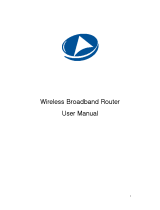 Amar Sun Technology Wireless Router User manual
Amar Sun Technology Wireless Router User manual
-
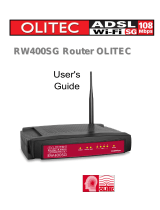 Olitec RW400SG User manual
Olitec RW400SG User manual
-
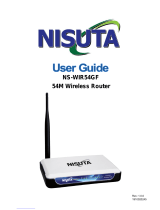 Nisuta NS-WIR54GF User manual
Nisuta NS-WIR54GF User manual
-
Longshine LCS-WR5-3214N User manual
-
Alfa Network AC1200R User manual
-
Trendnet TEW-435BRM User guide
-
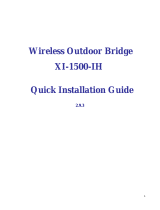 IMC Networks XI-1500-IH User manual
IMC Networks XI-1500-IH User manual
-
König CMP-WNROUT10 Owner's manual
-
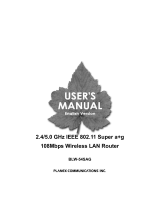 Planex BLW-54SAG User manual
Planex BLW-54SAG User manual


























































































